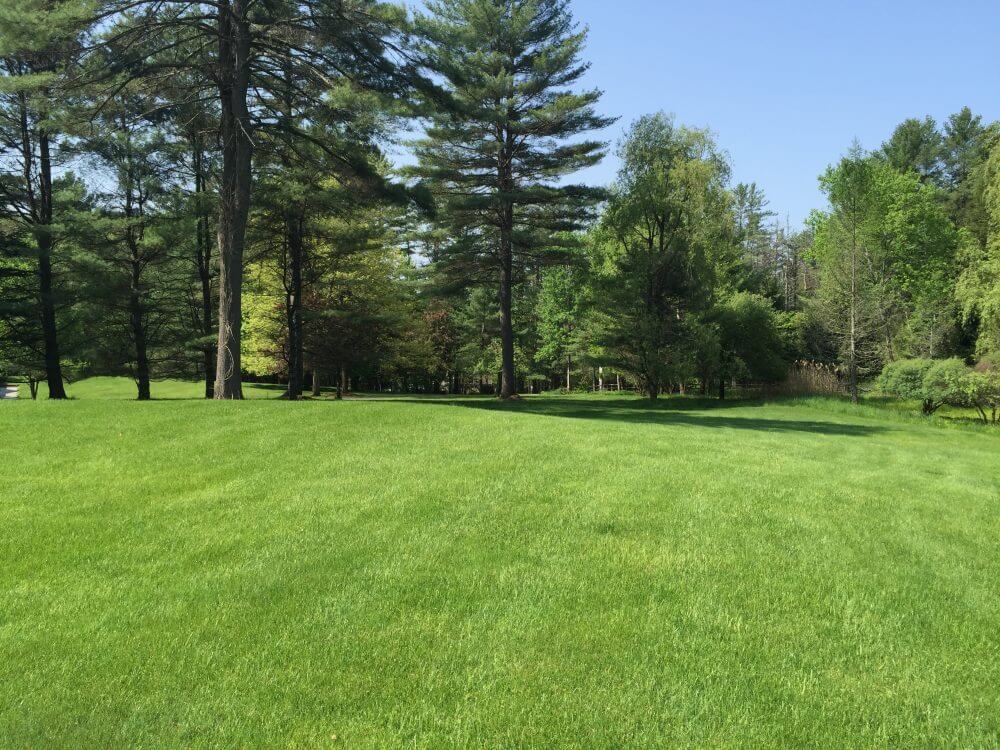As seed catalogs arrive, we get a peek into the not-so-distant future of gardening, and more importantly for some of us, enjoying our beloved lawns. As the outdoors remains in a frozen cold state of affairs, dreaming about colorful flowers, shrubs and vibrant green grass is the joy that gets us by until the spring thaw. Perhaps this is the year you have decided to take action and improve your lawn.
According to some recent studies, any investment in your home landscape can improve your home’s value by up to 15%! Wow, that’s a better return than my stock market investments. One of the easiest and lowest cost landscape improvements you can do is to upgrade your existing lawn.
The good news is most lawns can be improved “as is”, in other words, improved without major renovations or restorative work. Even bad lawns generally have good areas and the focus and related costs for improvements can be reduced by reviewing the entire site before deciding upon an appropriate course of action.
The vast majority of home or commercial lawns can be improved by literally identifying the underlying issue: soil health. Like a solid foundation from which a house is built, the soil supports and helps sustain the lawn above. Many chronic lawn issues, and indeed demise and death of grass, can be attributed to poor soil. What is poor soil?
Poor Soil Health
Poor soil has many sad faces from low organic matter, nutrient deficiencies, crazy pH levels, to structural issues like compaction. Like cheap concrete used in a foundation, poor soil will not support a long-term healthy lawn no matter how much fertilizer is applied. Addressing soil issues is a fundamental ingredient when improving your grassy investment whether starting over from scratch or rebuilding an existing lawn. So what can be done to help a sad lawn smile?
Compost Tea
Adding compost tea to an ailing soil system benefits your existing grass in many ways such as adding organic matter and most importantly, beneficial microbes like bacteria and protozoa. Compost tea should be sprayed in the spring and or fall. The sicker the soil/lawn the more applications should be done, from 1 to 5 per season.
Soil pH
Addressing soil pH is one of the easier fixes, since modern-day lime is not the dusty lime farmer’s used long ago. The newest generation of calcium-based lime is fast acting, more powerful, and provides more than just a bump in the pH. Calcium helps soften the soil, also relieving compaction. Chippers’ high-calcium lime is coated in humates, enzymes and proteins for healthier roots and soil. Lime can be applied any time of year.
Aeration
Addressing compaction through core aeration is a simple yet effective means to open up your soil to air. Like humans, grass roots need air to breathe and without some spaces filled with air, a healthy plant cannot grow. Aeration is generally done in the spring and or fall depending upon the urgency as it relates to current lawn health.
If you have a sick lawn and dream of something greener this year, now is the time to create a game plan to address your soil. Improving your lawn will not only make it look better, it will make your home more valuable, give you a sense of accomplishment and provide the enjoyment of the nice lawn your dreamed about in the middle of the winter.

Visions of a Beautiful Lawn
Tags:
aeration
, chippers
, winter damage
, concord lawn care
, nh lawn care
, vt lawn care
, compost tea
, calcium lime
, winter lawn care
, Poor Soil Health
, Soil pH

